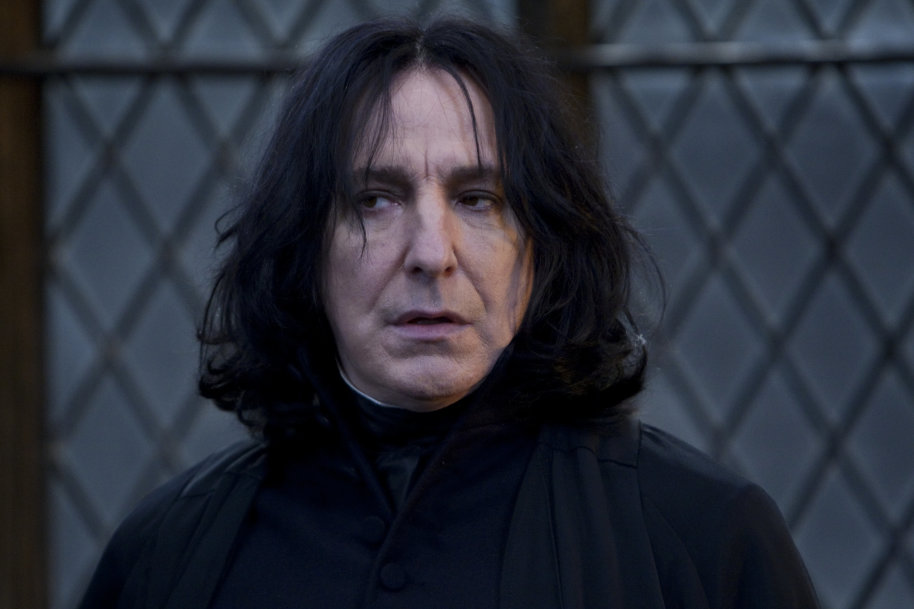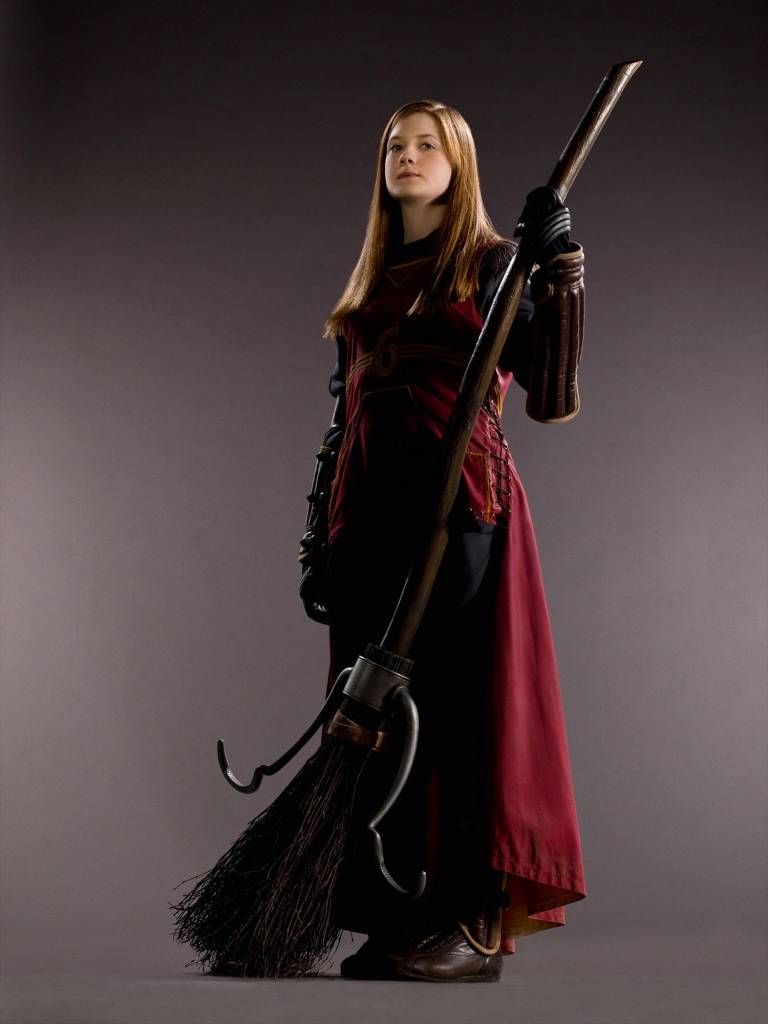
- Handy Hints to get Points
- Writing School
- Interview
- The Great Book Review
- The Lair of Madam Pince
- Dear Aunt Molly
- Character Profiles
- Creative Corner
- Trivia and Puzzles
- Birtday Announcements
- Hogwats Mystery
- League Table
Follow all important events of the International Wizarding School Championship here in the Wizarding World News. We also have a live Twitter feed and an Instagram account for you to get day by day updates!
HANDY HINTS TO GET YOU POINTS

This article is all about helping you to understand how points are awarded and how you can get maximum points. Not all areas of judging are based on the quality of your writing, for example, you can write a beautiful story, but miss the theme. In this article I will be outlining what a theme is, how you can interpret the theme, and how to get maximum points.
In our points guidance for plot we mention the use of storytelling techniques. These techniques are designed to help your plot be more intriguing, amplify the tension, and show off your plot. These techniques are designed specifically to engage your readers, and, depending on the kind of story that you’re writing, keep them on the edge of their seat.
There are a lot of techniques out there, so please don’t limit yourself to the few that we have covered. If you know some really good techniques, we would love to hear them; please add them to a comment below. In this article, I will go in depth into three techniques and then give you a brief overview of a few other storytelling techniques.
The Mountain
The Mountain is a structure that builds tension within a story continuously until you reach the climax. It’s similar to ‘The Hero’s Journey’ which also relies on building tension. One of the main differences is that in ‘The Mountain’ things don’t have to end well for the hero. For this reason the prequel trilogy for Star Wars is a good example. Anakin Skywalker is the hero and in the climax he turns to the dark side, is defeated and left for dead.

This structure should help you to map out the drama and tension in your story. It will help with your pace and flow as you build up layers of tension. Like climbing a mountain, it will go in gradients, the conflicts gradually getting more difficult or have higher stakes. A great way we can see this progression on a larger, more obvious scale, is the Harry Potter series.
The Mountain is one of my favourite techniques to read because it relies on conflict in the story, and for me, conflict is one thing that always keeps me reading. This technique really leans into that and it’s a fantastic tool if you want to grip a reader.
Basic structure:
Opening –
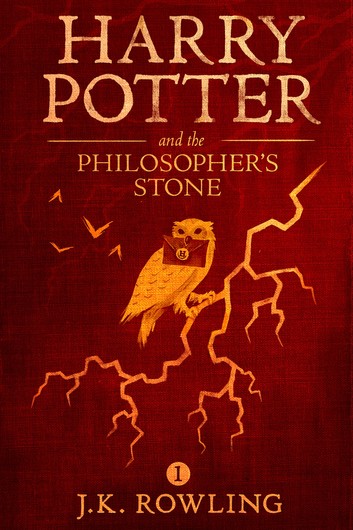
- Introducing your world, characters, heroes and villains, and you will have smaller conflicts.
- ‘Harry Potter and the Philosopher’s Stone’ does this well, you get to know the world, the characters, and the idea of Lord Voldemort is gently introduced.
Middle –
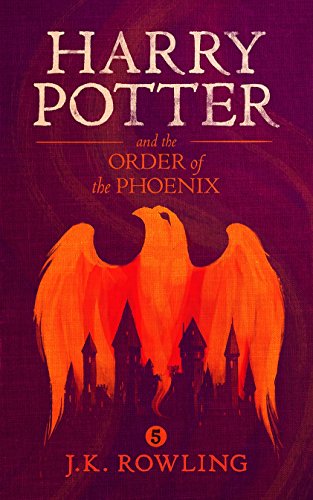
- The stakes are getting higher! In ‘The Chamber of Secrets’, you can see the stakes jump a little, but not much. This is because for this technique, you want to progress a little at a time.
- If you skip to ‘Harry Potter and the Order of the Phoenix’, Harry is outside of Hogwarts fighting for the first time. There are lives online, and the main purpose for the hero is becoming much clearer.
- ‘The Half-Blood Prince’ then really ups the ante on conflict. This is where things are getting far more, especially with the death of someone we feel should be untouchable; Professor Dumbledore. As he is considered to be the only one that Voldemort was afraid of, and he’s now gone, this changes the tone completely.
- You are also enlightened as to what that final conflict will be and it’s the biggest conflict you can imagine them facing; destroying the Horcruxes.
Climax –
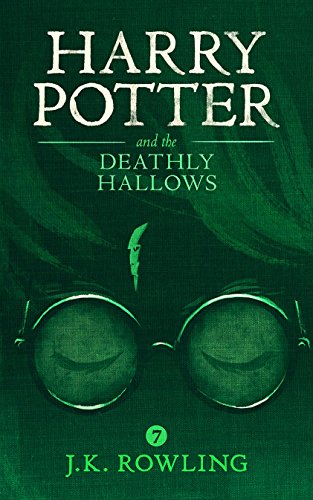
- Your story comes to its conclusion.
- Throughout this story the trio are fighting this final obstacle, and each horcrux is increasingly difficult to find and destroy.
- The climax includes a twist that leans into this technique, because this doesn’t require a happy ending. We learn that Harry will have to die.
- Everything is resolved in a final battle where everyone’s lives are on the line and as the stakes are at their highest, so is the death toll.
- Taking a look at other series’ though, things don’t necessarily have to end well for the Hero or Heroine. The Deathly Hallows has a lot of loss, but overall has a positive climax. Other series can end with a hero’s demise.
Nested Loops
This technique is great if you want to have a more complex storyline or add a number of layers to a story. The focus of the technique is having numerous narratives layered on top of each other. This can add tension for a reader, without there being a great deal of conflict in the story. This is because you get the story piece by piece, and tend to understand the whole, only at the end.
At the centre of these kinds of stories, there will usually be a core message, and this will bring all those narratives together. You have a lot of layers, but the central or core message unifies those narratives into one story. That core message can be anything. A great way of explaining this is the Matryoshka Doll, or Russian Nesting Dolls.
Imagine each doll being a narrative within the story, but that center doll is whole, and when your reader reaches this point, they should understand everything, and your core message or meaning is understood.
False Start
This technique is very interesting because you will start with a story that your reader feels they know. It will be almost predictable, maybe it follows a common trope or typical story type, like the Romantic Comedy.
This technique will then disrupt that sense of security you had in the story. It inserts an unexpected storyline, hurdle or disruption, setting your character back to where they need to ‘start again’, hence the name.
In our blog we have a great example of this through a speech J.K. Rowling gave at Harvard University. This speech begins with her academic achievements, and the natural progression that the audience expected was her success in writing Harry Potter. Instead it focuses on when her life was derailed and she struggled to get by at all. The speech then builds up and shows her struggles until she did achieve everything that we know she achieved.
This use of conflict is great, because your reader is invested in the character and is still longing for things to work out the way that they expected. This technique will follow the character to where their situation is resolved, or they have moved past the conflict that was in their way. It usually has a very positive resolution.
Techniques
- Monomyth – Also known as ‘The Hero’s Journey’. This has a circular plot structure, example: The Hobbit
- In Medias Res – Starting in the heat of the action, then going back to the beginning, example: How To Get Away With Murder
- Converging Ideas – Different strands of thinking coming together to form one cohesive whole, example: NCIS
- Petal structure – Multiple stories around one concept, example: Love Actually.
Prompt of the Round – [Negative pairing]
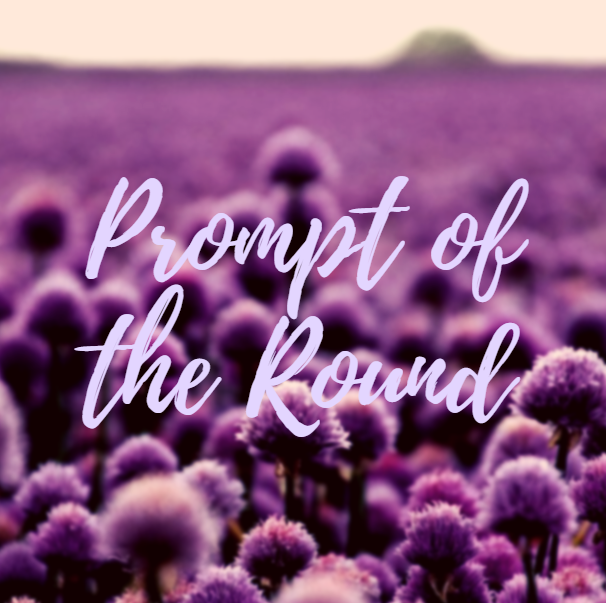
Ah, pairings. Almost every story has one. Whether it is a budding romance, a long-term relationship or two best friends off on an adventure, pairings are central to a piece of fiction. We are all familiar with the concept of both romantic and platonic pairings, however, have you ever considered writing a negative pairing?
Negative pairings can encompass both romantic and platonic relationships. I have divided them into four categories, all of which I will discuss here:
- A romance that’s gone wrong.
- Estranged families.
- Fights between friends.
- Bitter rivals.
The important thing to note is that if you are using a negative pairing prompt, the negative aspect of this pairing needs to be the focus. Below I will discuss situations that your pairing may face, and some of these may resolve. To receive full marks, the core of your story needs to focus on the difficulties they are facing. Otherwise, you will be writing a general romantic or platonic pairing. Even when writing characters who are enemies, without the conflict being the focus, you would just be writing characters that happen to not like each other. This means focusing on the tension between two characters and imbuing it with your plot.
A romance that’s gone wrong
This first category looks at a romantic pairing but it needs a more troublesome twist. We know that in real life, not all relationships run smoothly, and the same can be said in fanfiction. A negative pairing prompt can be used to look at the difficulties that our favourite pairings face.
- Perhaps your pairing is experiencing their first fight, or they have been fighting for a long time.
- Is it time for your pairing to call it quits?
- Is it mutual, or is one person more invested than the other?
- Is one person feeling stuck in a relationship they no longer want to be in?
Unrequited love can also be a form of negative pairing. You could write from the perspective of the person feeling that love; focusing on their sadness and heartbreak. Alternatively, look at the person who is not returning those feelings—do they feel guilty for breaking the heart of another, annoyed at the unwanted attention, or something else altogether?
Estranged Families
Family is a strong theme throughout Harry Potter, and just as strong is the concept of familial dysfunction. Negative pairings can be used to highlight the tensions within a family.
For example:
- A Ron/Twins story; the focus being the spider incident.
- A Harry/Dudley story set throughout their childhood
- A story focused on the tensions between Draco and his father.
Similarly to “A romance that’s gone wrong,” you can choose to look at a familial relationship as tension begins to grow or you could look at the effects of their estrangement over a period of time. You could focus on Draco/Lucius when Draco is a small child; show how their relationship may influence Draco as he grows up. Alternatively, you could write about their relationship post-war, and how Lucius’ parenting style has brought Draco to where he is now. How did tension develop between them during the war, and how did this contribute to Draco becoming a Death Eater?
Causes of family dysfunction are as varied as the families themselves. Think about how you want to build your tension. Is it a slow boil over many years, or is it a sudden eruption? Remember, like any relationship, tension within families does not come from nothing. Is your character jealous of the attention their sibling is getting? Are they resentful of the way they have been treated by a parent? Or do your characters have conflicting personalities?
Fights between Friends
Friendship can be a rocky road at times, and almost everyone has experienced a fight with a friend. Negative friendship pairings can be split into two categories; let’s call them the “Ron” and the “Snape.”
The “Ron” is an ongoing friendship that experiences rough patches but keeps going. Whether it is a jealous friend, a misunderstanding, or finding themselves on the opposite sides in a debate, these friends can make up after their disagreement.
On the other hand, there is the “Snape.” This is the friendship that just won’t work despite all the effort being put in. Perhaps the effort is only one-sided, either way this friendship ends up breaking down. Explore what has led up to this point; how do the characters feel? Was this dissolution of the friendship mutual or one-sided?
Bitter Rivals
‘Rivals and enemies’ is one of the strongest tropes in fiction and a great way to use a negative pairing.
- Snape vs the Marauders.
- Harry vs Draco.
- Voldemort vs Dumbledore.
Out of the four categories for a negative pairing, it can be argued that this one is the strongest. Unlike the above categories, there is nothing positive about this pairing. These characters hate each other and don’t care who knows. However, this does not mean that this relationship is two-dimensional or predictable.
Explore how this rivalry began;
- Generational?
- Accidental?
- Did one knowingly do something to hurt the other?
- Have they always been enemies, or was there a tipping point?
Another area to explore is the motives of the characters. Usually, there is a lot under the surface with these relationships, and by exploring them, you can create a very sophisticated story.
- Why is Draco so antagonistic towards Harry?
- What caused the Marauders to start harassing Snape.
- Why did Snape fight back?
The key thing to remember when using a negative pairing prompt is to ensure it is the centre of the story. Especially if you are using it as your main prompt. It can be tempting to focus on a main event or plot point and have your pairing secondary to that. However, in order to achieve full marks, ensure that your negative pairing and the relationship between them is central to your plot, using the tension between your characters as the main “event” of your story.
Writing School – Commas
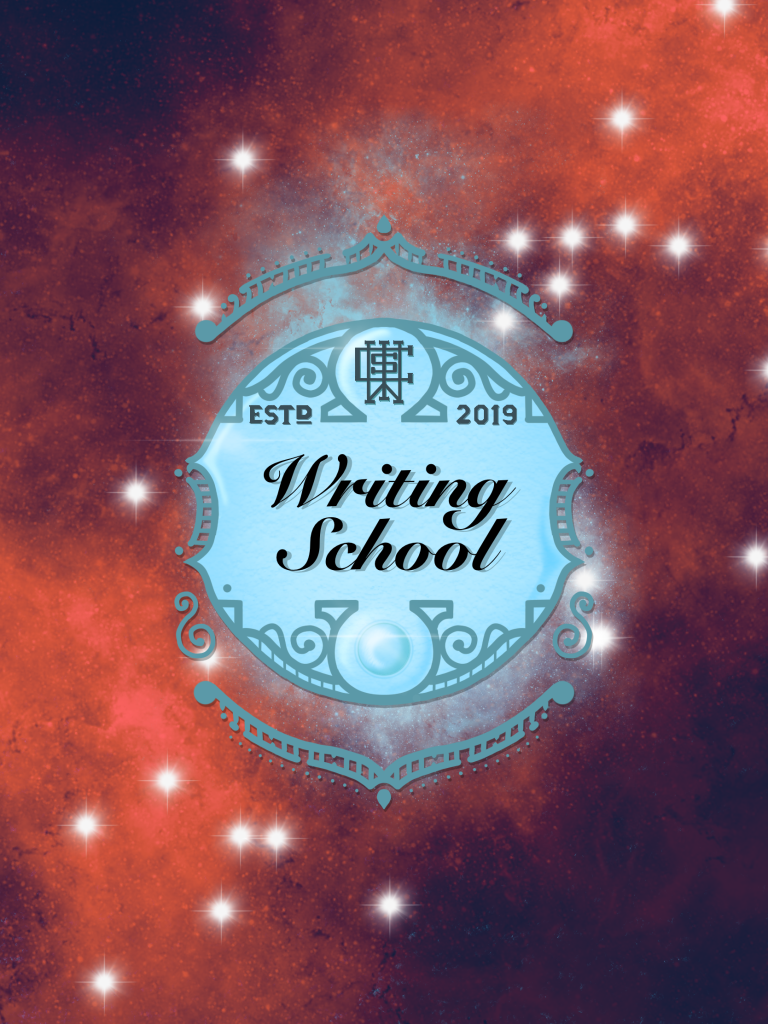
Time for some more of Headmistress Lun’s creative writing tips (with the support of Admin TQA)! In the last issue, you learnt how to punctuate dialogue. This round we are looking at how you can improve your storytelling with commas. These rules can feel overwhelming, but we hope that with a little help, you’ll be using them like a pro. Here is a quick overview of the many comma rules we have to deal with.
- Use a comma before any coordinating conjunction (and, but, for, or, nor, so, yet) that links two independent clauses.
Example: “Harry went flying, and he saw a Dementor.”
An independent clause includes both a subject and verb and can stand on its own as a sentence.
- Use a comma after a dependent clause that starts a sentence.
Example: “When Harry went flying, he saw a Dementor.”
A dependent clause contains both subject and verb but cannot stand on its own as a sentence.
Commas always follow these clauses at the start of a sentence. If a dependent clause ends the sentence, however, it no longer requires a comma. Only use a comma to separate a dependent clause at the end of a sentence for added emphasis, usually when negation occurs.
- Use commas to offset appositives from the rest of the sentence.
Appositives act as synonyms for a juxtaposed word or phrase.
Example: “While flying, Harry saw a Dementor, a being that looked like a cloaked figure.”
“a being that looked like a cloaked figure” is the appositive. This is because it gives more information about “a Dementor.” If the appositive occurs in the middle of the sentence, both sides of the phrase need a comma. For example:
“A Dementor, a being that looked like a cloaked figure, attacked Harry.”
Don’t let the length of an appositive scare you. As long as the phrase somehow gives more information about its predecessor, you usually need a comma.
Exception to this rule: Do not offset a phrase that gives necessary information to the sentence. Usually, commas surround a non-essential clause or phrase.
Example:
“The Dementor that attacked Harry scared his friends” doesn’t require any commas. Even though the phrase “that attacked Harry” describes “the Dementor”, it provides essential information. Otherwise, no one would know why the Dementor scared Harry’s friend. Clauses that begin with “that” are usually essential to the sentence and do not require commas.
- Use commas to separate items in a series.
Example:
“He saw a skull, a cauldron,* and a scary cat when he entered Knockturn Alley.”
That last comma, known as the serial comma, *Oxford comma, or Harvard comma, causes serious controversy. Although many consider it unnecessary, others, including Business Insider, insist on its use to reduce ambiguity.
- Use a comma after introductory adverbs.
“Finally, Hermione could cast a Patronus.”
“Unsurprisingly, Ron didn’t swallow before starting to talk.”
Many adverbs end in “ly” and answer the question “how?” How did someone do something? How did something happen? Adverbs that don’t end in “ly,” such as “when” or “while,” usually introduce a dependent clause. Rule number two in this post has already covered this. Phrases like “on the other hand” and “furthermore” also fall into this category.
- Use a comma when attributing quotes.
The rule for where the comma goes depends on where the attribution comes. If the attribution comes before the quote, place the comma outside the quotation marks.
Example: The runner said, “I saw a duck.”
If attribution comes after the quote, put the comma inside the quotation marks:
Example: “I saw a duck,” said the runner.
A detailed article on the punctuation of dialogue can be found in season 2, issue 2 of the WWN.
- Use a comma when the first word of the sentence is freestanding, for example, “yes” or “no.”
Example: “Yes, I saw a duck when I went running.” – “No, the duck didn’t bite me.”
- Use a comma when directly addressing someone or something in a sentence.
Example: Dumbledore asks, “Harry, how are you?”
- Use a comma between two adjectives that modify the same noun.
For example: “I saw the big, mean Centaur when I went running.”
Only coordinate adjectives require a comma between them. Two adjectives are coordinate if you can answer yes to both of these questions:
1. Does the sentence still make sense if you reverse the order of the words?
2. Does the sentence still make sense if you insert “and” between the words?
Sentences with non-coordinate adjectives, however, don’t require a comma. For example;
“I lay under the powerful summer sun.”
“Powerful” describes the “summer sun” as a whole phrase. This often occurs with adjunct nouns, a phrase where a noun acts as an adjective describing another noun — like “chicken soup” or “dance club.”
- Use a comma to offset negation in a sentence.
Example: “I saw a duck, not a baby seal, when I went running.”
Also use commas when any distinct shift occurs in the sentence or thought process. “The cloud looked like an animal, perhaps a baby seal.”
Writing School Challenge
For this round’s drabble, we want you to use commas like a real pro. Try to use the sentence structures you usually avoid! Does it improve your flow? Does it add to the rhythm of your writing?
Your story will be rated on how well you correctly fit at least three different kinds of comma placements into it. Please state the comma types you use and want to be judged on in the A/N.
Your prompts this round will be focusing on political topics surrounding the real and the wizarding world! They should be used in your story as part of the plot.
- [Plot Point] – Sexual rights
- [Plot Point] – Racial discrimination
- [Plot Point] – Fair wages
- [Plot Point] – Education equality
- [Plot Point] – Travel restrictions
Pick one of the topics and write a short drabble about it and the associations it evokes.
REMINDER: This season, we want you to submit your Writing School drabbles without getting a beta. There is no penalty if you do so anyways as we can’t control it. This is meant as training for you, to help you get better rather than relying on others when writing.
Closing date: 8am UTC 7th March 2020
interview
Writing and Receiving Reviews with Hemlockconium

Esme, otherwise known as Hemlockconium, joined Beauxbatons about ⅔ of the way through last season. She has been an awesome addition to the team, and so I decided to interview her about reviews on FanFiction.Net. We met at the Leaky Cauldron and had a nice long chat over a steaming pint of Butterbeer.
Hope: Glad to have you here, Esme! First question: What was the last review you received about? Was it good or bad?
Esme: The last review I received was a PM about The Blood Countess. The reader really enjoyed the story and left a very positive review.
Hope: Oh, details, details! Was it more constructive, or just a generally positive review?
Esme: It was very general with a lot of praise for the plot and characterisation and some questions about inspiration and writing advice.
Hope: Always good! So, have you ever gotten any good constructive criticism in a review? Have there been any reviews that you’ve taken especially to heart?
Esme: Most of the constructive criticism I’ve received has come either from competition feedback or from the IWSC review challenge. Casual readers tend to stick with a simple—sometimes very enthusiastic—thumbs up.
As for reviews that I’ve taken to heart, that’s pretty much all of them. I become indescribably happy at every new review, especially the ones that take the time and care to go into more detail. There are two reviews that stand out above the rest—one regarding ‘Kali Black and the Prisoner of Azkaban’ because it was the first detailed review I received, and the second for ‘A Squib at Hogwarts’ because their praise was absurdly uplifting.
Hope: Has there ever been a review that made you upset or that you felt criticized you needlessly?
Esme: There have been a couple of homophobic ones directed at my Kali Black series and one long rant about ‘The Thing About Weddings’ where according to the reviewer I demonised Petunia and Vernon Dursley.
Hope: How did you handle that experience? Do you have any suggestions to others on how to deal with such negative reviews?
Esme: If the review is negative but constructive, then be polite. Thank them for taking the time to point out the flaws in your work and ask for more details or advice if need be.
If the review is negative, rude, and unhelpful, ignore it and delete it if you can. If someone takes the time to leave that kind of review, they’re doing it to get a reaction. They aren’t worth it, so don’t give them the satisfaction.
Hope: Excellent advice! The key is context in these situations, isn’t it? Have you met any really good friends through a constructive review?
Esme: Exactly, and I have. It’s one of the things I like most about this website. The private messaging feature is a great tool for interacting with other members of the community.
Hope: Is there anything else you want to say?
Esme: Only that you should always leave a review after finishing a story. Find the positives and praise them, and if there are negatives, kindly point them out. It will make the author’s day.
FUN FACT: Headmistress Lun and Headmistress Verity became great friends after sending some lovely reviews!
The Great Book Review
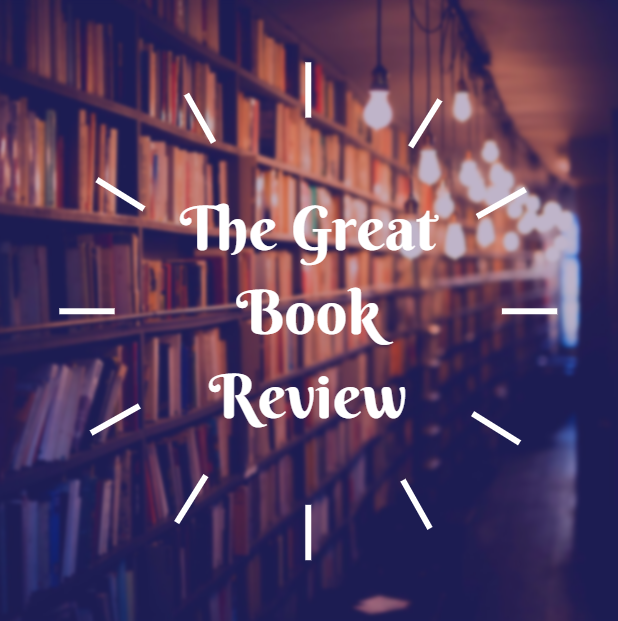
These judges’ picks were the best of the best, according to our judges! That means that each and every one of them is worth a read. Each story was awarded 3 extra points for their judges’ pick, except for the overall judges’ pick, which will get 5 points!
Durmstrang ~ Good Friends are Hard to Find by ReadBooks
The best thing about this story was how it opened. It focuses on those final days of Ginny’s first year at Hogwarts. She is struggling, isolated and feeling a mountain of guilt and shame. As any good Gryffindor does, she puts on a brave face, until she can’t anymore. This made me feel for Ginny Weasley, and that’s some feat as I don’t really like her at all! I identified with her need to run away and hide, so she no longer had to pretend that everything was okay.
Ginny really isn’t okay. She is haunted by the events of her year at school, which we all know as The Chamber of Secrets. Her family means well, and they try to make her smile, but they fail to realise that she needs something more than that.
Luna Lovegood steps onto the scene. It’s written as though this is when they initially become friends. At first, I thought this didn’t fit, because they had been in the same year and the same classes all year. Once you get past that, it just reinforces how withdrawn Ginny was, something we don’t really appreciate in canon. Luna, as we would expect; she accepts Ginny’s struggles in a way that no one else does. She uses the analogy of a creature that I am not sure really exists and one of her mother’s recipes. After all, a cup of tea and cookies make everything better.
~ Headmistress Verity
Ilvermorny: Found Objects by sekdaniels
I had shivers reading this story! Sekdaniels’ Found Objects started like any other Ron and Hermione breakup story, but quickly shifts to a straight up horror. I found that I was unable to anticipate what would come next. I was anxious the entire time, hoping that everyone was going to be okay.
The best thing about the story was the solidarity between Harry and Hermione. Whatever happened throughout the books, they always stuck together (except during the Firebolt incident), and it’s nice to see that carried over here.
I also enjoyed the overall atmosphere of the story. The story itself was definitely leaning towards horror, but the atmosphere created added through sentence structure and word choice, did so much more than it could have without.
I don’t often read horror, but I can say for sure that this is a definite must read.
~ Headmistress Hope
Beauxbatons: Missed Opportunity by Lady Sloane
This story shows us something we don’t ever get to see in Canon – Charlie Weasley in love. Lady Sloane introduces us to Elena, a Romanian witch Charlie meets through work, only to tear her away from us.
Charlie’s journey is interesting and realistic, as he comes to terms with the illness of the woman he loves, and his eventual loss. His grief hits home for anyone who has lost a loved one before being able to tell them everything you had wanted to.
This story leaves me wanting to know more about Elena, and about her relationship with Charlie prior to her illness. This is a must-read for anyone who loves Charlie.
~ Admin Georgie
Mahoutokoro: It Should’ve Been Me Story by Ninjadevil2000
Heads note: This story contains trigger warnings of major character death, and self-harm. Take care when reading.
This story was so very heartbreaking. It tells the story of George losing the other half of a whole, the one person who meant the absolute world to him – his brother Fred.
This story made me want to scoop George up and hug him so hard.
George’s distress is so tangible, how every mirror, or piece of glass causes him to think that Fred is still there, and in that distress causes him to try and change so that his reflection will reflect only himself and no one else.
I loved the twist at the end of the story when a certain person declares their love, and gives George a real reason to live. That made me so happy. I’m so glad it ended the way it did, and not the way I thought it would.
Well done Ninja, you have done a wonderful job on this story.
~ Headmistress Claire.
Hogwarts: Tell Me We’ll Never Get Used To It by QuickSilverFox3 – OVERALL JP
This story starts with an exploration into the imaginary, throwing the reader right into beautifully written action. The background information seamlessly flows into the narrative, providing a great overview of what is happening while keeping the reader on the edge of their seat! This is a story full of glorious action that never loses track of how important an engaging plot and characters are.
There are many head canons around the sexuality of characters and many have been explored in fanfiction before. This story takes one that I especially like and gives it a very unique plot relevance that resonated with me in a way only a few head canons manage.
~ Headmistress Lun
Writing School Honourable mentions
Sometimes Love is Relentless by Silvermist Ruhi
This story really does what it says. It shows a love so relentless and unyielding that the prompt that was chosen fits perfectly. The characterisation is perfect. The very non canon pairing works perfectly with how these characters behave canonically, even if they would usually hate each other. The story is brimming with emotion long before the dialogue prompt is used. It’s more than worth a read; it deserves a read.
The great book review interview
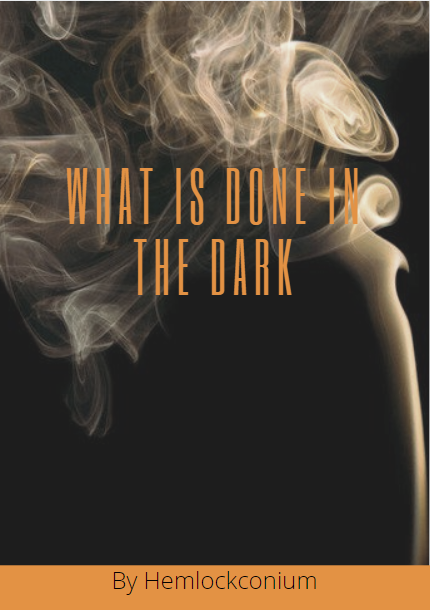
Congratulations to Hemlockonium for winning Overall Judges Pick for round two! Your story, What Is Done In The Dark, left us utterly speechless. We felt every emotion that your characters experienced; capturing our racing hearts with your words. Having written such an incredible story, we want to find out more about you and your amazing piece of work.
First of all, why don’t you introduce yourself? How would you describe your writing style, and what you like most about writing?
I would describe my writing style as descriptive, I suppose. I love reading descriptive scenes—paragraphs and sentences that let me picture every setting, character, emotion, and movement perfectly—and those, incidentally, are the scenes I most like writing as well. I enjoy imagining scenes and finding the right words to convey them to other people. Writing is not the most relaxing hobby—it can be very frustrating, at times—but there’s nothing more satisfying than finishing a story.
Now, tell us about that emotional story!
- We are all curious to know your thought process when you planned out and wrote this murder mystery. Can you tell us a little bit about how you came up with this idea?
It took me a while. I’d actually started writing a completely different story featuring Percy and the twins before I changed course. The motivation behind that change was an intense desire to murder Severus Snape, which led to the murder mystery storyline.
- What inspired you to write this dark turn in Sirius’ character?
Sirius Black is one of my favourite Harry Potter characters. He’s one of the good guys, but he’s also got some of that moral greyness that makes so many villains so interesting. In the books, his character took some pretty dark turns—he nearly got Snape killed when he sent him to the Shrieking Shack during a full moon, for example. He’s reckless and ludic, and although he has a strong moral centre, he often acts in immoral ways, so it wasn’t much of a stretch to imagine him in this scenario.
- Flipping back and forth between both Sirius’ and James’ points of view added a certain intensity to the story. What made you decide to use this structure of storytelling?
Initially, I was going to tell the story solely from Sirius’s point of view, inserting flashbacks of the party to add to the crime/mystery element. But I’m not a huge fan of flashbacks and am very aware of how tricky they are to get right, so I ditched that idea, and decided to use James instead. I spent a long time debating the sanctity of the structure because I know how much frequent POV changes can affect the flow of a story. I spent more time trying to figure out what structure to use than actually writing the story.
- This story was full of suspenseful and emotional moments. Was there a single phrase, paragraph, character realization, etc., that was the most emotional for you to write?
Sirius’s reaction to smearing blood over his face is a strong contender because figuring out how he felt in that moment was very uncomfortable, but the most emotional moment, for me to write, was when Sirius apologised to Snape for what he had done. In that moment, Sirius broke in a way he won’t ever recover from no matter how much he lies and pretends.
- What aspect of your story are you most proud of?
I’m very proud that the mystery element worked so well. It’s not a genre I’ve ever written before, but I’ve had quite a few people say that the story left them on the edge of their seat and that they gasped when they read Snape’s name, so I am very happy about that.
- The story all led up to the moment when James would find his friend, and all the while Sirius is scrambling to deal with his terrible mistake. With your final words, you left us all wondering; did James figure it out? If you are willing to share, what was going through James’ mind at the end of the story? Would you ever consider a sequel to answer these many questions?
Much like Sirius, James is very loyal, and he seems like the type who only sees the best in the people he cares about, so he would never think that his best friend could be capable of murder. However, he also knows Sirius very well, and I imagine him as being quite perceptive. At the end of the story, he knows something happened, but then Sirius tells him that everything’s fine, and why would Sirius lie? James wants to trust his friend, but he can’t shake the feeling that something is wrong. So what happens when his instincts and his friend say two different things? The problem with Sirius’s big master plan is that lying is the worst decision he could have made. Not only does invalidate any pardon he might otherwise have received, but it will also create tension in his friendships, especially with James.
A few people have endeavoured to drag a promise for a sequel out of me, so yes, there will be a follow-up to this story!
The Lair of Madam Pince

Welcome to the library section. This season we are showcasing stories that you would like to have publicised; stories that you want more reviews for, and stories that you think are contenders for the IWSC Awards.
IWSC Awards Suggestions
In the honeydukes chat, we have been asking for all your nominations for the end of season awards. We have a number of categories, and in the chat you helped us come up with more. I am going to outline what would be required for a certain category and link some of the stories that have already been nominated.
Luna Lovegood’s Award for Creativity:

This award doesn’t fit a single genre, but calls for the stories that stand out in a crowd. Luna Lovegood is one of the most unique individuals in the wizarding world, and so the story that wins this award should be the most unique of the season!
Nominations so far:
The Carobradlers Mission by KeepSmiling
This story is about Lily Luna Potter and a theory that she has. In every magical home there is a device, and Lily Luna thinks it’s taking away the future’s free-will! Lily Luna needs to prove her theory before she can put a stop to this evil, can she do it?
Creature Council by KeepSmiling
This second story is also by the creative mastermind, Keep Smiling. The creature council is where magical creatures have their say. Dobby is on a journey with drastic news and only the creature council can help him. One thing is for sure, Dobby will never be the same again.
Review of the Week
From Auror to Professor by Ninja Devil
NinjaDevil writes a story about Harry and his time in the Auror department. This career is not for the faint of heart; that’s not Harry, but it certainly takes its toll on his life in this story. Ninja explores Harry’s decision and reasoning when he finally decides to walk away from this prestigious occupation.
I was a little disappointed that I didn’t get to see Harry in action as a Professor at Hogwarts. But this story hints at a larger story that could follow this journey and I eagerly await another chapter!
DEAR AUNT MOLLY Professor Snape
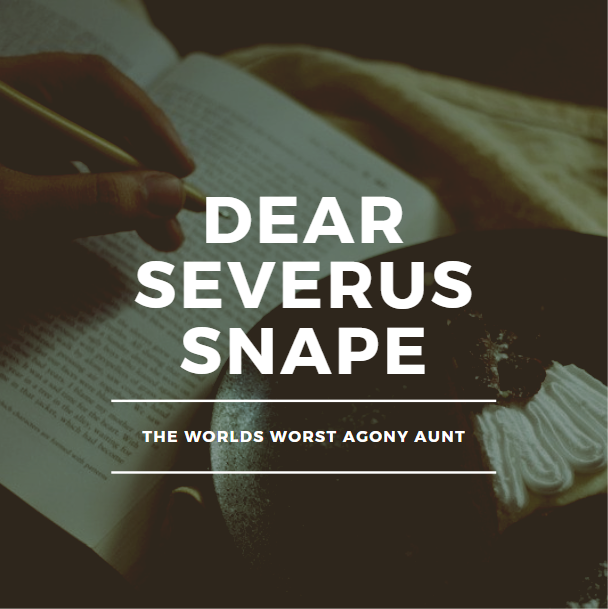
Welcome to another painful addition of Dear Aunt Molly. It’s droll and tedious, and I highly suggest you move on.
For those of you with less sense than Lockhart, I, Severus Snape, am being emotionally manipulated into responding. My wife — the most beautiful ginger witch this side of Hogsmeade — was supposed to be filling in. However, Aunt Molly doesn’t know how to stop germs and now she’s diseased as well.
Dear Aunt Molly,
I accidentally turned my entire house into Gingerbread, and it resulted in children starting to eat the bricks. I am worried my house will be eaten up before I find a solution. What do I do?
Gingerbread Lady
NEWSFLASH: You’re an idiot.
Dear Mu—Aunt Molly,
Hi. How have you been? Well, I hope. I’ve gotten into a bit of a situation with my Mum, and so I’ve come to you for help. My Mum has apparently planned my life for me. She wants me to take up a Ministry job straight after Hogwarts, get married to the boy that I am currently seeing when I’m around twenty, and have three kids. But I have different plans for myself. I want to travel to different places after I get out of Hogwarts, and train to become a professional Quidditch Player. Playing Quidditch has always been my dream—I’ve had a poster of Gwenog Jones on my wall for years now, and I’m really good. And as far as the marriage front is concerned, I don’t intend to marry until I’m 26 at the very least. I’m not even sure if I want kids at all, let alone three of them! I tried to tell this to Mum but she took it the wrong way and blew up on me. What do I do?
FireheadChaser
Dear Miss Weasley,
Your attempt at anonymity was pathetic to say the least. It is your foolish dreams of being a Quidditch Star and your mothers pandering for more squibbling children that makes it so obvious. I suggest you abandon your far fetched dreams of becoming a Quidditch star, and listen to someone older and wiser.
No, not your mother. She would infect the wizarding world with a quidditch team’s worth of Potters before you reach the age of 25! The sight of you and Potter disgusts me tremendously, and I do not think you should inflict that on the world. We are still recovering from the disturbia of You-Know-Who.
Please do something more worthwhile with your life … like knitting.
P.S. Lily says that your mother’s jumpers are extremely comfortable.
Dear Aunt Molly,
I have been dating a guy for the past six months. It’s been a few years since we graduated from Hogwarts. He is an amazing boyfriend and I enjoy our time together. But lately, something has been bothering me. I have noticed that even his most basic spells don’t work well. His Levitation Charm changes colour of the object and once his warming spell blasted hot, gusty wind on me. At first, we both laughed it off, but I can’t ignore it anymore. I’m holding my breath whenever he uses magic and I hate it.
I don’t know how to address this issue without embarrassing him. What should I do?
Distressed Witch
Dear Distressed Witch,
I really wouldn’t worry. I am aware of the condition, and while there is no cure for your “boyfriend”, it’s not contagious.
My advice is to break up with him for some other reason. When I was at Hogwarts people used to make up all sorts of reasons to turn me down. Some of the most inventive reasons were:
- I really think you should be washing your hair that day
- I’m allergic to the way you smell
- I don’t like men that wear dirty boxers
My wife, of course, assures me that none of these issues ring true, and that they were, in fact, intimidated by my intellect. It seems obvious in hindsight. I do recommend their methods though, why be the one to have to be tactful about such dreadful news, palm it off on someone else.
I feel confident that Aunt Molly would say the same thing, as she forced this dreadful task onto me.
Addendum:- All of us here at the WWN hope Aunt Molly gets well soon, and we’d like to thank Severus for stepping up and answering the questions.
We would also like to express that the views, thoughts, and opinions expressed in this edition of Dear Aunt Molly are not the views of the Mods of this competition or anyone at Wizarding World News. All Offences should be taken up with Professor Snape at Hogwarts Witchcraft and Wizardry. Thank you
Character Profiles
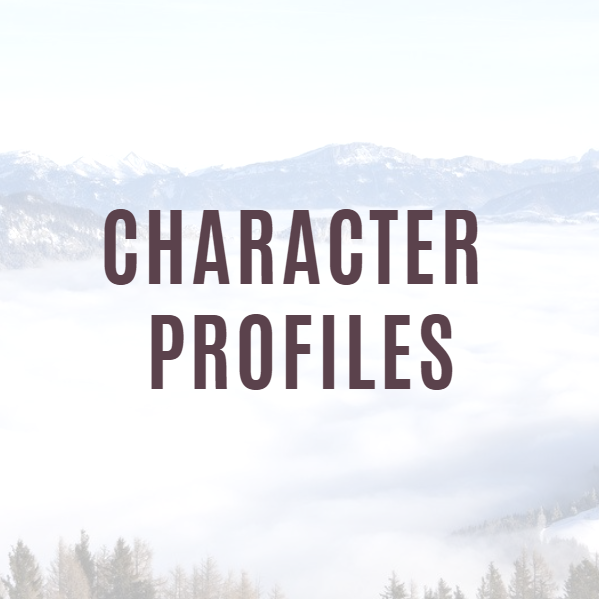
How To Write Albus Dumbledore
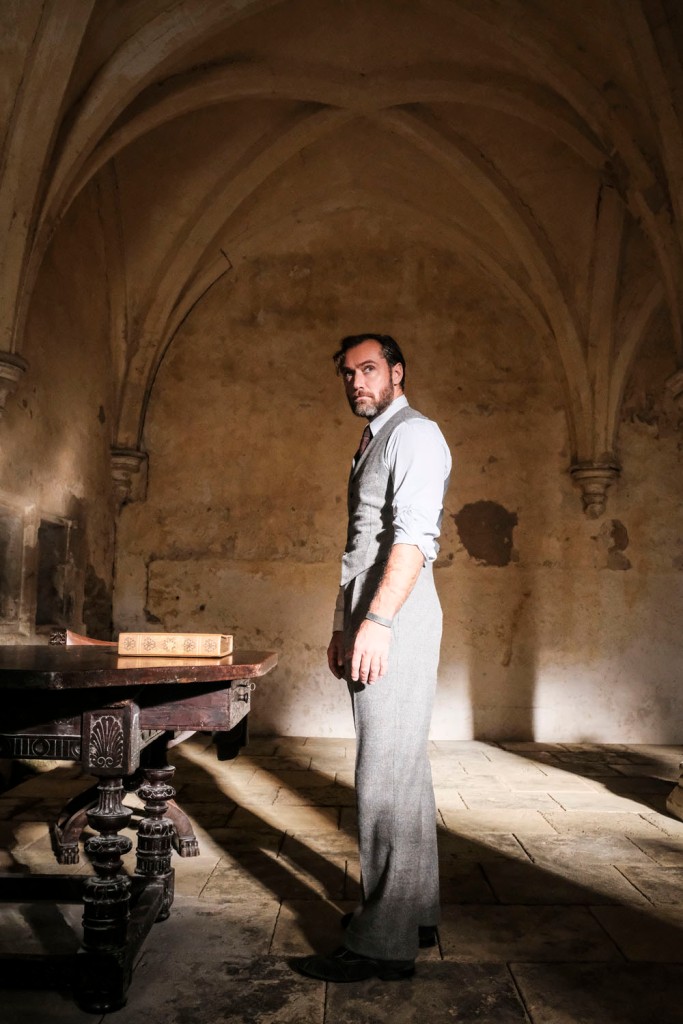
As this round is centered around Hogwarts, I thought I would give all of you some help with one of the school’s most well known Headmasters: Albus Percival Wulfric Brian Dumbledore. He was Hogwarts’ most mysterious professor and has a lot of secrets to unravel, so let’s get started!
Born around the close of the nineteenth century, Dumbledore has seen a lot in his days. In his youth, his father, Percival, was sent to Azkaban after his sister Ariana was attacked by a group of Muggle boys and he retaliated in her defense. Albus then had to endure his initial Hogwarts days with the reputation of coming from a Muggle-hating family, but this was quickly eclipsed by his outstanding academic achievements. This led him to have correspondence with “the most noted magical names of the day,” according to Rita Skeeter.
During this time, Albus also had to keep his brother, Aberforth, from getting into too much trouble;. Aberforth was accused of casting wayward spells until dropping out of school altogether to help take care of his sister who frequently lost control of her magic. This got much harder after their mother, Kendra, died during one of Ariana’s outbursts. Albus reluctantly stepped away from his promising future to care for her and Aberforth. Things were going as well as could be expected despite the widening rift between the brothers, until the summer when Albus met Gellert Grindelwald — the nephew of family friend, Bathilda Bagshot. Gellert and Albus formed an instant friendship, one that caused Albus to neglect his struggling siblings, as their plans soon became much more important to him than their broken family.
Albus and Grindelwald spent the summer forming a plan to force the Muggle population under magical rule. Their goal was to find the Deathly Hallows, of which Gellert had already found one. It was Albus who came up with the well-known slogan, “For The Greater Good,” which would later become Grindelwald’s manifesto. The excitement about their plans for world domination died down quickly, however, during a duel between the two young men and Aberforth. The fight was the culmination of Aberforth’s disbelief in his brother’s plans and Albus protecting his brother when he finally realized what Gellert was willing to do to attain power. This resulted in the tragic death of Ariana, who was hit by a wayward spell.. Gellert quickly left town, and the brothers’ relationship was more strained than ever, and would not be completely mended even after Albus’ death.
After his brief summer flirtation with the dark side, Albus quickly turned away from power, recognising the lustful effect it had on him. Instead of taking the position of Minister that he was offered, he focused on teaching and returned to Hogwarts. From Hogwarts, Albus was more than willing to work towards defeating the Dark Forces. Eventually, he even duelled with Grindelwald in 1945; bringing an end to his reign of terror.
In later years, Dumbledore would reveal that he had delayed the duel for so long because he did not wish to know who had killed Ariana. He didn’t want to find out that it had been his spell that had killed her, as well as being reluctant to fight a man he had loved and sworn a blood oath with.
In his later career at Hogwarts, Dumbledore gained reputation. Starting out as a professor of Transfiguration and Defense Against the Dark Arts, he worked his way up, becoming Headmaster in 1964. He had a huge impact in many students’ lives, including the young boy who would one day grow up to become Lord Voldemort. He also supported the admittance into the school of Remus Lupin, despite the fact that he was a werewolf, and later hired him as a professor.
After the deaths of Lily and James Potter in 1981, Albus quickly intervened to protect their son, Harry, instructing Rubeus Hagrid to bring the boy to the Dursleys. Activating the magic that allowed Harry to be safe as long as he was living with someone of Lily’s bloodline (ie Petunia), he would not see Harry again until he started Hogwarts.
When this happened in 1991, Dumboedore already knew of the prophecy, about Snape’s love for Harry’s mother, and that Harry would eventually have to “die”. He often is criticised for keeping many secrets which he did to protect Harry but often leading to him endangering himself and others. Only after the death of Sirius Black, Dumbledore revealed the prophecy to Harry.
Leading up to his death in 1997, Dumbledore finally began to teach Harry the things he would need to know to defeat Voldemort while leaving out the most important piece: that Harry himself was a Horcrux. This went to show just how manipulative the man was, even towards those he cared for.
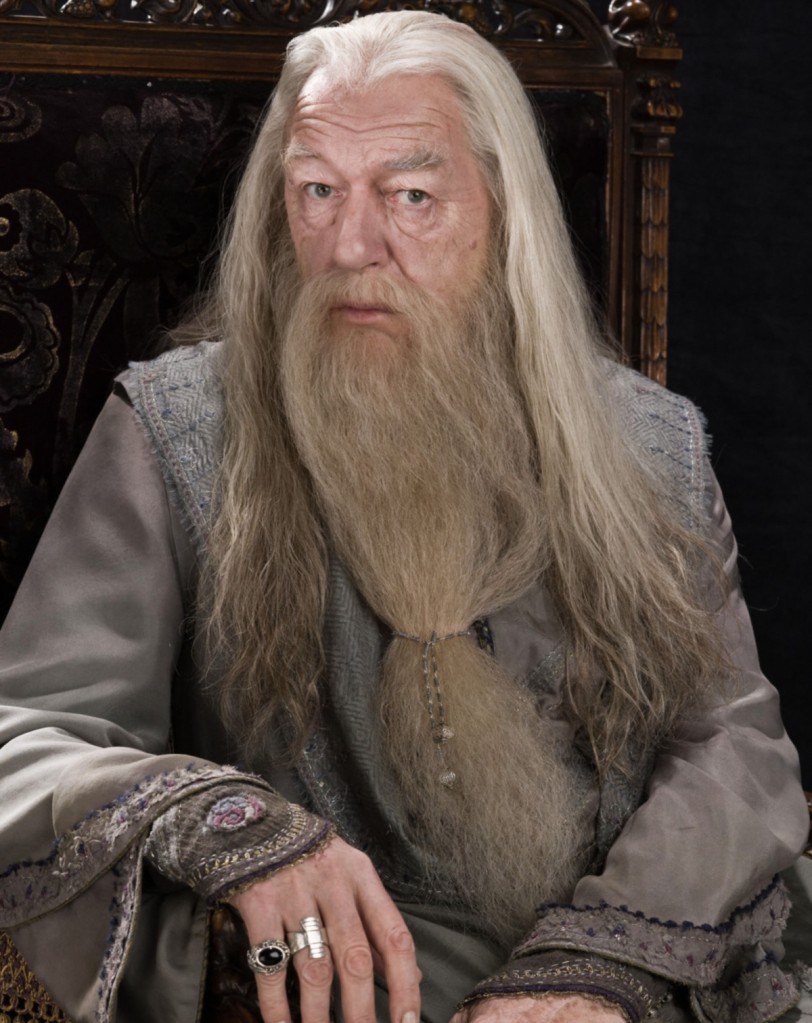
A few Headcanons or theories you could use for Dumbledore are that, because he has been outed as homosexual by JK Rowling, he had a crush on Grindelwald while they were friends during that one summer. A symbolism that many adhere to is that Harry, Snape, and Voldemort represent the three brothers from the Deathly Hallows fable, and that Dumbledore represents death in that story. A couple of fun ones are that the Muggle-born students call him Gandalf occasionally, and he just goes along with it. Another one is about him and McGonagall sitting together and chatting about the students’ relationships.
A few aspects that you could explore for Dumbledore are his relationships with his fellow teachers, both as a teacher himself and as Headmaster. How did their relationships change? You could explore his friendship with McGonagall, as well as many other teachers. You could also dive into his younger days. How was he affected by the imprisonment of his father, the deaths of his mother and sister, and the betrayal of his friend and lover? These events shaped him, and it’s important to know why.
Finally, explore the days of Grindelwalds power. Did they meet again before their battle in 1945? How did Albus feel about the dark path his friend had taken, and the role he had played in it?
Hope you all enjoyed this, and keep reading in the next issue, where I’ll help you learn about the second most evil wizard in history: Grindelwald himself.
Creative Corner
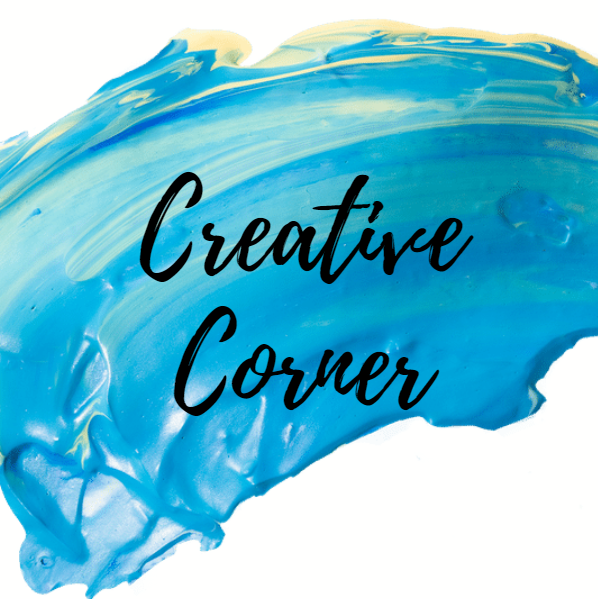
Welcome to the Creative Corner, where we show off all your lovely fanart and poetry, and where you can earn some extra points by joining in a creative challenge! As usual, the challenge will earn each participant 5 points for simply submitting! (Note that for every subsequent submission you will receive 1 point) The winner of the challenge will be featured in the next issue and will get themselves another 5 points!!
Challenge
The world of Harry Potter makes us smile, laugh, love, fear, and sometimes even cry. With this creative challenge, we want you to explore the realm of character and reader emotions through a somewhat different form of creativity. Choose your favourite scene from the series and re-envision the moment in a short poem. Whether through haiku, limerick, or even free-verse, choose your style and write a poem to show a new side to the beloved story!
Here are the rules:
- A give-in, the poem needs to be your own words from your own mind. Walt Whitman didn’t write about Harry Potter after all!
- Your poem should be no longer than 10 lines. No lengthy epics allowed!
- At the end of your poem, include a very brief, one-sentence description of the scene you wrote.
To enter the challenge, please send your poems to us at wizardingschoolchampionship@gmail.com.
Any submissions that do not meet these requirements will not get the points. It’s all about celebrating your favourite words, characters and your own imagination. Good Luck!
The deadline for submissions is March 10th so get creative!
Last Issue’s Challenge
These are some of the fantastic submissions we got for the event challenge, and I have to say, I want to go to them all! That being said, we had to pick winners, and it was so hard that we picked two! We couldn’t say no to Dobby and Myrtle, so they both win! Congratulations to Paceso and to Janie Ohio.
I think Headmistress Hope recently started art classes, because Beauxbatons Academy of Magic is slaying Creative Corner challenges!

Ninja Mahoutokoro Year 3 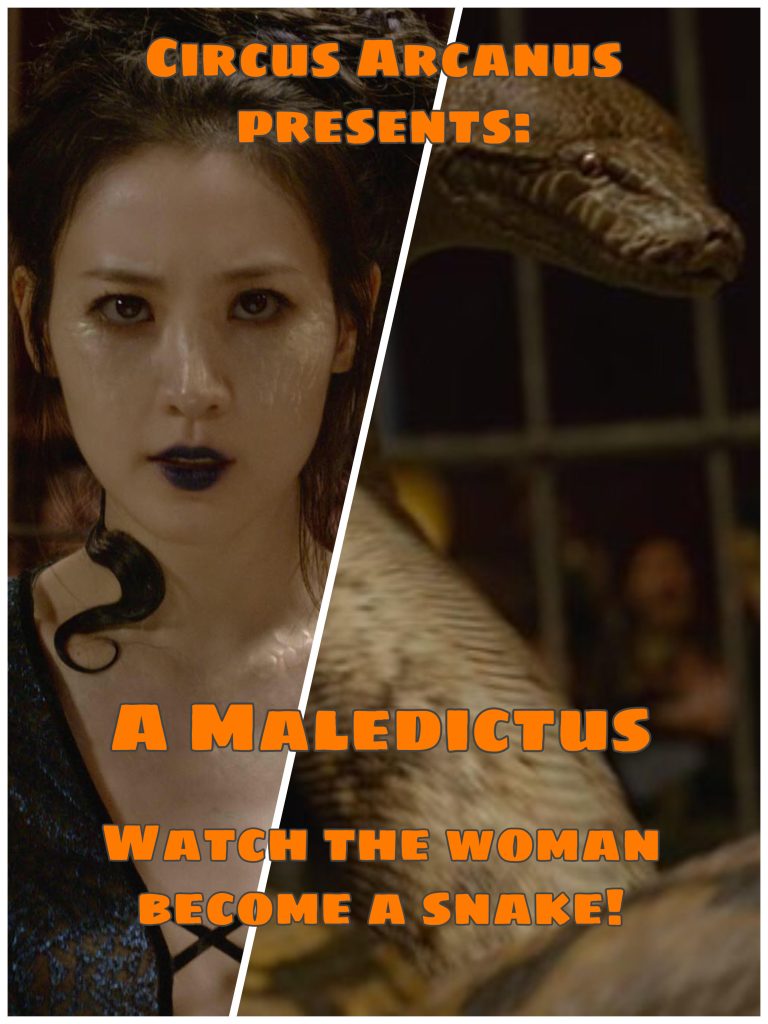
Ninja Mahoutokoro Year 3 
Hemlock Beauxbatons year 1 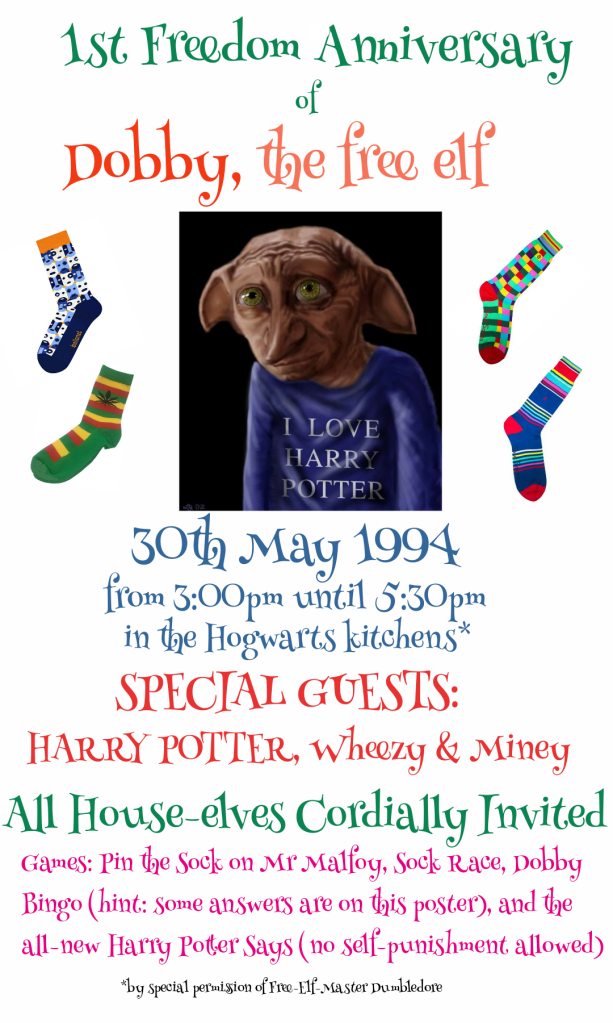
Paceso Beauxbatons Year 2 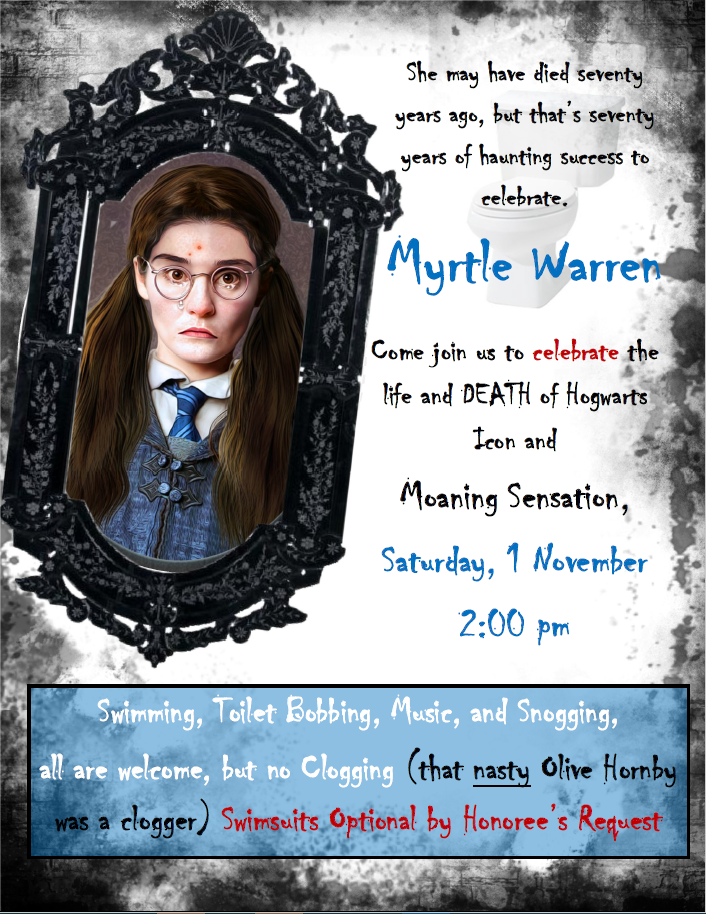
Janie Ohio Beauxbatons Year 6
Fanart submissions
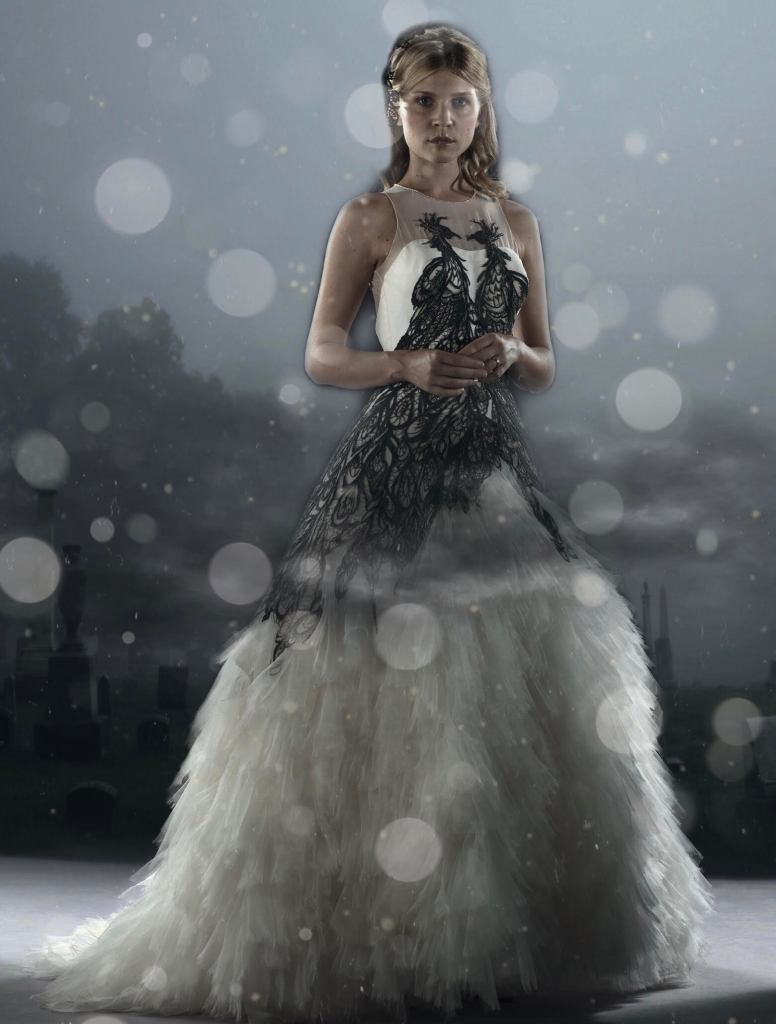
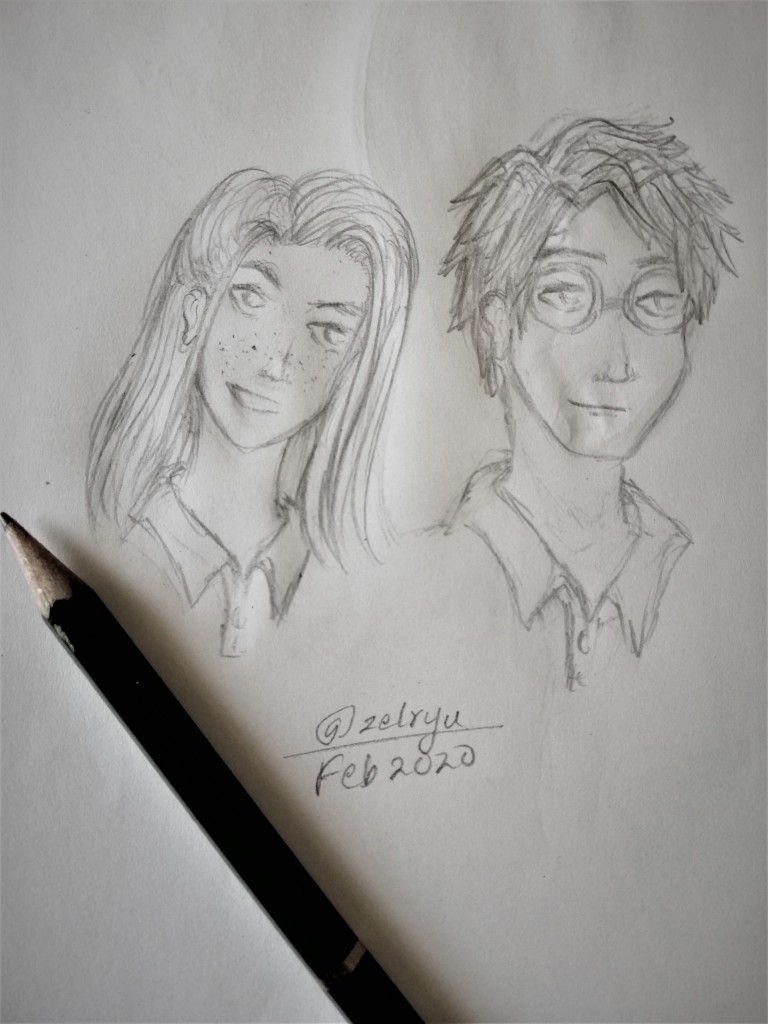
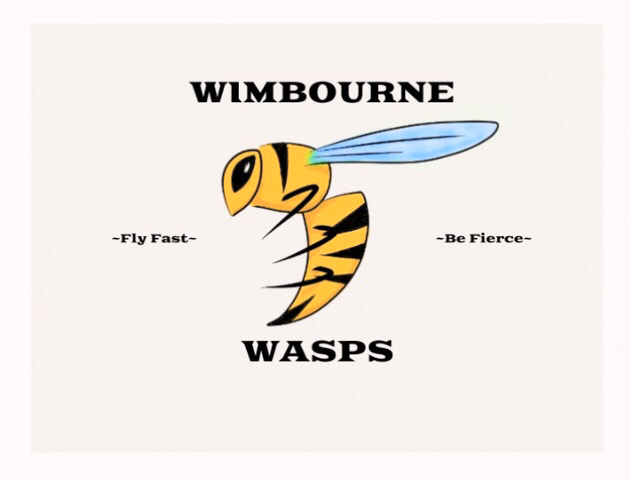
(no points awarded)
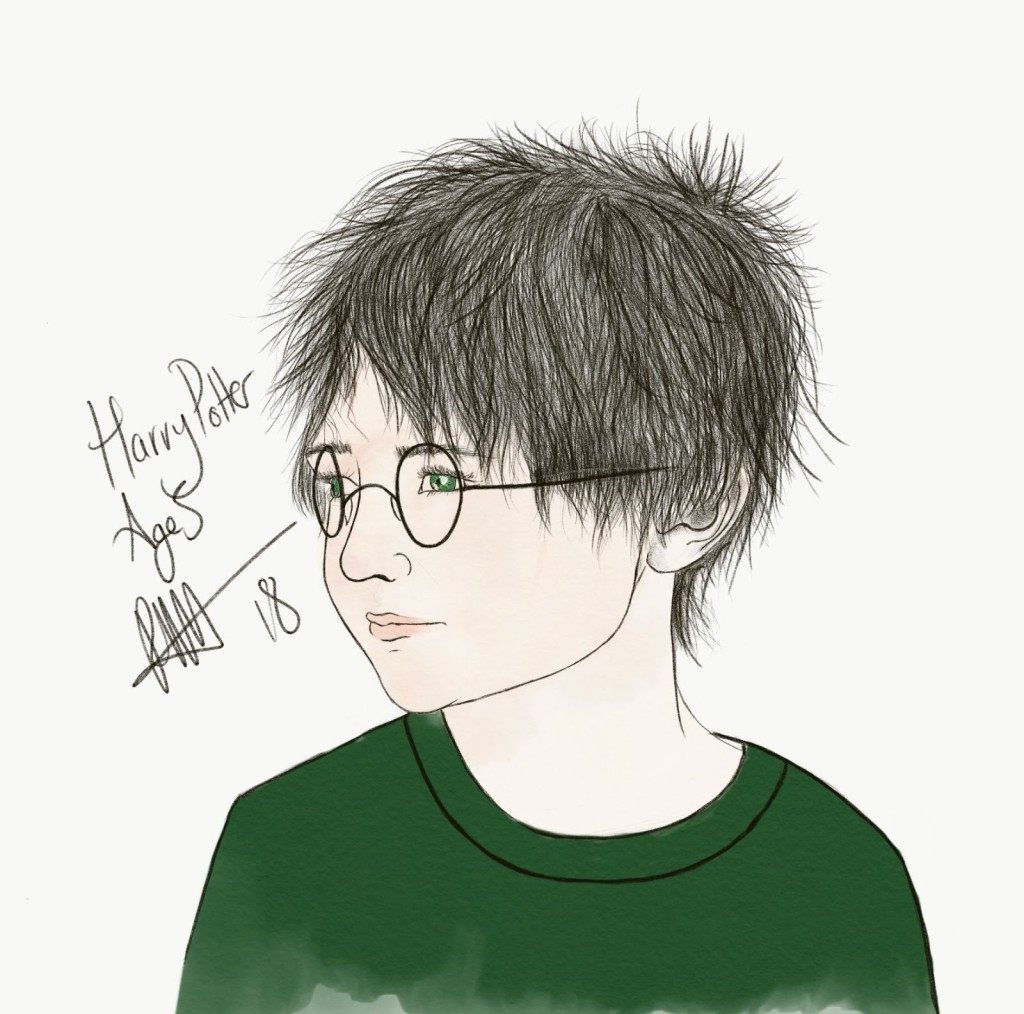
(no points awarded)
Trivia and Puzzles
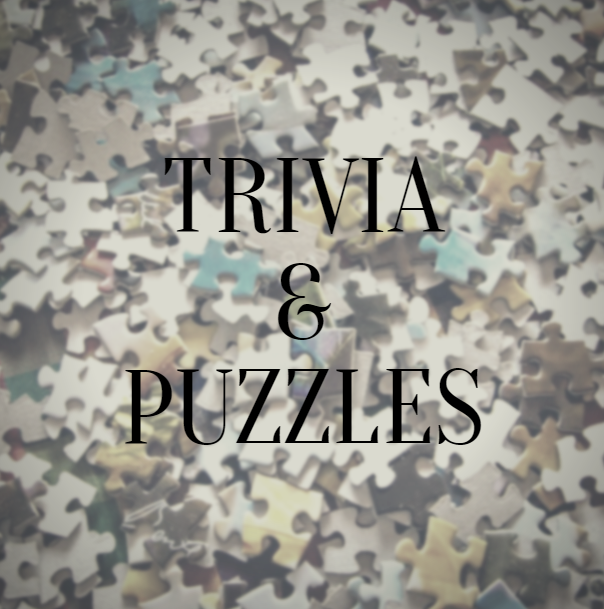
Welcome to the trivia and puzzles challenge. Our puzzle can be found in our online blog, but first, lets congratulate last issue’s winners! So many people got involved with the maze! The random number generator was hard at work and picked the following winners; Leprechaun, Average Fish and Always a Dragon. Last issue the trivia seemed to get people a little stumped, but we did get a number of winners; Janie Ohio, Silvermist Ruhi, and Hemlock.
Who will win this issue?
- What is Cho Chang’s Patronus?
- What is the make and model of Mr Weasley’s car?
- What Latin name is given to the spell that causes echoes of the dead to reemerge from a wand?
- Which book does Hermione use to brew the Polyjuice potion?
- Who is the author of the standard book of spells?
- Originally called the Put-Outer, what name is given to the object bequeathed to Ron in Dumbledore’s will?
- How many Harry Potters leave Number 4 Privet Drive in the Deathly Hallows?
- Where in Hogwarts is Dumbledore killed?
- In Harry’s first flying lesson, what was he trying to retrieve that led to him being made Seeker?
- Which discipline does Dumbledore demand Harry study to protect his mind against outside forces?
Instructions: Starting with the one revealed position, follow the clues to fill in all the spaces with Harry Potter characters
| 1 | 2 | 3 | 4 | 5 | |
| A | The creature that lives in the Black Lake is in the last space in the row below me | My friend, who got cursed by a necklace is below our former captain | The man who had my job two years ago is the second to last space in the second to last row | The woman who I made an Unbreakable Vow for is in the B2 space | The Gryffindor student who didn’t believe Harry Potter is two rows down and one space over |
| B | The professor that I try to send away from Hogwarts is the last space in row D | My son is the middle space in Row F, and my husband is below me. | My deputy is the first space in row D | Harry Potter’s aunt is in the last space in the second to last row | The brother of the boy I helped into the Hogwarts boats is next to me |
| C | The Champion from the Durmstrang school is the middle space in the row below | My former house elf is right beside me | The first Hogwarts Triwizard Champion is two spaces to the left | The Hufflepuff who got Petrified is to the right of me. | The Captain of the Gryffindor Quidditch team is in space E2 |
| D | The woman who tried to ruin Hogwarts is two rows above me | The man who I thought was trying to take my job is two rows up and one column over | The professor of Defense Against the Dark Arts while I visited Hogwarts is the middle space in the first row | My employer is two spaces to the left | The Hogwarts professor who teaches Herbology is two rows down |
| E | The ghost that my owner meets in second year is in the F4 space | The girl who succeeded me as captain is in the first row but the same column as me | My son that I had an immense falling out with is diagonally above me Arthur Weasley | The brother of the best wizard of his age is in the last spot in the first row | My nephew’s owl is the first space in this row |
| F | The professor my grandson is terrified of is in the A4 space | The little sister of the Beauxbatons Champion is in the first space in the first row | My father is the second space in row C | The man who was hired as Defense Against the Dark Arts but never got to do the job is in the A3 space | The caretaker of my best student is the first space in this row |
Birthday Announcements
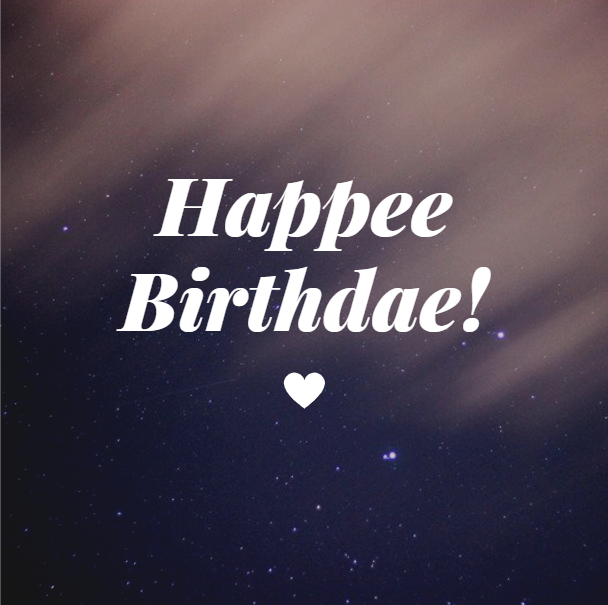
Hip, hip, hooray! It’s your birthday!
In this section, we will celebrate your birthday with you with a special message. During sign ups in January (and throughout the year), a birthday thread will be created for you to let everyone know when your birthday is. You will not have to put the year if you don’t want, and you can even simply put the month if that is what you prefer. During each issue, we will then let everyone know it’s your special day coming up!
Happee Birthdae to You
We have so many amazing writers celebrating their birthdays this month. We’d love to wish them all a wonderful day!
March – You share your birthday with Ron Weasley (1st), Sybil Trelawney (9th), Remus Lupin (10th), and James Potter (27th)
Jenny (Ilvermorny) — 17th
Claire (Ilvermorny Headmistress) — 27th
Ayane (Mahoutokoro) — 27th
The International Wizarding School Competition League Table
| School | Place | This Round | Story Points | Overall Points | MVP |
| Beauxbatons | 1st Place | 287.5 | 174.25 | 930.25 | Janie Ohio |
| Mahoutokoro | 2nd Place | 232 | 164.5 | 748.5 | Ninja Devil |
| Hogwarts | 3rd Place | 191.5 | 121.5 | 732.5 | Quick Silver Fox |
| Ilvermorny | 4th Place | 197.75 | 148.25 | 640.5 | DarylDixon’s Girl |
| Durmstrang | 5th Place | 174 | 117.25 | 542 | Read Books Write Things |
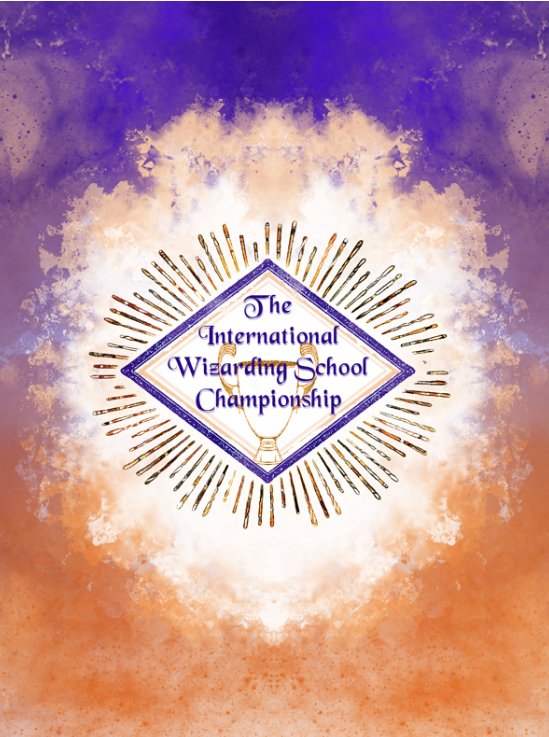
Feel free to contribute to other aspects of the paper by sending a private message to the Competition account. We are always looking for pieces of fanart, and even your thoughts or recommendations. Even if you want to send a message to someone in the competition that you think has excelled, or maybe they helped you out? Send it to Aunt Molly! Anything else should be sent to Wizarding School Championship. In the Subject should be Wizarding World News: [Name the section of the paper you are writing about] depending on what you’re messaging about.
